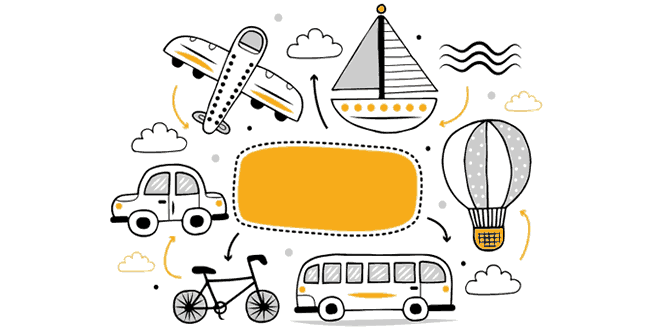NCERT 10th Class (CBSE) Social Science: Lifelines of National Economy Quiz
30 Multiple Choice Questions related to NCERT 10th Class (CBSE) Social Science: Lifelines of national economy Quiz:
- Chennai, Kolkata, Delhi and Mumbai (Bombay)
- Transport is necessary to carry passengers and goods from one place to another
- There are five types of transport systems in India: roadways, railways, pipelines, waterways and airways
- National highways connect one state with another and are of national importance. These roads are constructed and maintained by the central government. There is about 52,000 km of national highways
- The Expressway national highways have been planned to meet the requirement of fast movement of traffic in the country
Your Score:
Your Ranking:
Lifelines of National Economy Quiz: Chapter Summary
Transport
Transport plays an important role in the economy. Because of transport raw materials reach the factory and finished products reach to the consumer. The pace of development of a country depends upon the production of goods and services as well as their movement over space. Therefore, efficient means of transport are pre-requisites for fast development.
Apart from transport, the ease and mode of communications, like telephone and internet makes seamless flow of information possible.
Today, India is well-linked with the rest of the world despite its vast size, diversity and linguistic and socio-cultural plurality. Railways, airways, water ways, newspapers, radio, television, cinema and internet, etc. have been contributing to its socio-economic progress in many ways. The trades from local to international levels have added to the vitality of its economy. It has enriched our life and added substantially to growing amenities and facilities for the comforts of life.
Roadways
India has one of the largest road networks in the world, aggregating to about 2.3 million km at present. In India, roadways have preceded railways. They still have an edge over railways in view of the ease with which they can be built and maintained. The growing importance of road transport vis-à-vis rail transport is rooted in the following reasons;
- construction cost of roads is much lower than that of railway lines,
- roads can traverse comparatively more dissected and undulating topography,
- roads can negotiate higher gradients of slopes and as such can traverse mountains such as the Himalayas,
- road transport is economical in transportation of few persons and relatively smaller amount of goods over short distances,
- it also provides door-to-door service, thus the cost of loading and unloading is much lower,
- road transport is also used as a feeder to other modes of transport such as they provide a link between railway stations, air and sea ports.
In India, roads are classified in the following six classes according to their capacity
Golden Quadrilateral: The government has launched a major road development project linking Delhi-Kolkata- Chennai-Mumbai and Delhi by six-lane Super Highways. The North-South corridors linking Srinagar (Jammu & Kashmir) and Kanyakumari (Tamil Nadu), and East-West Corridor connecting Silcher (Assam) and Porbander (Gujarat) are part of this project. The major objective of these Super Highways is to reduce the time and distance between the mega cities of India. These highway projects are being implemented by the National Highway Authority of India (NHAI).
National Highways: National Highways link extreme parts of the country. These are the primary road systems and are laid and maintained by the Central Public Works Department (CPWD). A number of major National Highways run in North-South and East-West directions.
State Highways: Roads linking a state capital with different district headquarters are known as State Highways. These roads are constructed and maintained by the State Public Works Department (PWD) in State and Union Territories.
District Roads: These roads connect the district headquarters with other places of the district. These roads are maintained by the Zila Parishad.
Other Roads: Rural roads, which link rural areas and villages with towns, are classified under this category. These roads received special impetus under the Pradhan Mantri Grameen Sadak Yojana. Under this scheme special provisions are made so that every village in the country is linked to a major town in the country by an all season motorable road.
Border Roads: Apart from these, Border Roads Organisation a Government of India undertaking constructs and maintains roads in the bordering areas of the country. This organisation was established in 1960 for the development of the roads of strategic importance in the northern and northeastern border areas. These roads have improved accessibility in areas of difficult terrain and have helped in the economic development of these area.
Road Density
The length of road per 100 sq. km of area is known as density of roads. Distribution of road is not uniform in the country. Density of all roads varies from only 10 km in Jammu & Kashmir to 375 km in Kerala with the national average of 75 km (1996-97). Road transportation in India faces a number of problems. Keeping in view the volume of traffic and passengers, the road network is inadequate. About half of the roads are unmetalled and this limits their usage during the rainy season. The National Highways are inadequate too. Moreover, the roadways are highly congested in cities and most of the bridges and culverts are old and narrow.
 Class Notes NCERT Solutions for CBSE Students
Class Notes NCERT Solutions for CBSE Students





